Full Stack Web Development with React JS, Angular and NodeJS
Loại khoá học: Web Development
Full stack web development. Up full stack developer career with HTML CSS Javascript, React JS, Angular, NodeJS, MongoDB
Mô tả
Hello there,
Welcome to Full Stack Web Development with React JS, Angular and NodeJS
Full stack web development. Up full stack developer career with HTML CSS Javascript, React JS, Angular, NodeJS, MongoDB
This course will be your gateway to learn web development from scratch.
This course will take you from a complete beginner to a master in hours! By the way, you do not need to know anything about this course. html css javascript, Full stack web development, full stack developer, angular, full stack, full stack web developer, nodejs, react js, node js, web development, oak academy, react, full stack development, fullstack web development, fullstack, full stack javascript
We'll be moving rapidly to give you the quickest, yet most thorough website building experience.
In this course, we have created a completely custom HTML learning environment for the first few sections of this course. Each lecture has an HTML page associated with it and has a start state.
JavaScript is one of the most ubiquitous programming languages on the planet, mostly because it's the backbone of interactive web applications. On top of that, JavaScript is a great language for beginners because it gives them a chance to write code that does something visual, which is exciting and helpful when you're just getting started as a programmer. Dynamic content is the hot topic in web development right now. Dynamic content refers to content that constantly changes and adapts to specific users whenever possible. For example, JavaScript can be used to determine if a website visitor is using a computer or a mobile device before deciding whether or not to render the mobile version of the website. It's these small things behind the scenes that create genuine value in using JavaScript to create dynamic web pages.
As Angular grows in popularity, new versions of the front-end framework are constantly being released. That’s why Udemy offers a wide range of courses covering every version of Angular available today.
With this course, you will improve your Bootstrap experience with HTML5 and CSS3 codes
This course will take you from a beginner to a more experienced level. You will learn HTML5, CSS3, Bootstrap 4, Javascript, React JS, Angular, NodeJS, and Mongo DB step by step with hands-on examples. And then you will be confident in using React JS, and if you ever get stuck, we will be there to help.
Angular is one of the most popular frameworks for building client apps with HTML, CSS. If you want to establish yourself as a front-end or a full-stack developer, you need to learn Angular.
Node.js is an open-source, cross-platform, back-end, JavaScript runtime environment that executes JavaScript code outside a web browser. By learning growing web server technology, NodeJS, you can improve your skills, get a new job and you can build powerful, robust web applications.
MongoDB is a cross-platform document-oriented NoSQL database program. By using MongoDB, you can build a modern application database for your projects.
From Setup to Deploy, this course covers it all! You'll learn all about Components, Directives, Services, Forms, Http Access, Authentication, Optimizing an Angular App with Modules and Offline Compilation, and much more - and in the end: You'll learn how to deploy an application!
Learn by doing!
So we have made this course as simple as possible in order to take you through step by step so you can feel confident and get a truly good understanding of how to utilize ReactJS. In this course, we will be teaching React by creating various projects.
In this course you will learn;
Learn to use the latest HTML5 and CSS3 to add unique styling to Bootstrap
Learn and create amazing high-quality Bootstrap 4 themes and UIs from scratch
Master every single Bootstrap component
Learn to compile Sass in the easiest way possible using a GUI
Get a crash course of the Bootstrap Grid System with the theme layout
Learn how to add Website Scrolling Animation to any Bootstrap Component or HTML Element
We will start with local installation and react basics. After that, we will create 5 projects.
Project 1 – Learn, create react app and JSX with ‘first-app’
Project 2 – Learn to React props system with ‘blog-posts’ app
Project 3 – Learn to react components, state, lifecycle methods, async operations, and much more... with the ‘hemisphere’ app
Project 4 – Handling event handlers, fetching data from an outside API, and showing list of records with ‘image-list’ app
Project 5 - Routing with React Router and using React Portals to render children outside the DOM hierarchy with the ‘react-router’ app
Become fluent in Angular terminologies, such as dependency injection, services, directives, transclusion, and more.
Design custom directives and save time and energy with easily reusable components.
Write quicker, better Angular code by discovering how AngularJS itself is built.
Realize the power of dependency injection, and how Angular accomplishes it.
Fully understand the architecture behind an Angular application and how to use it
You'll learn how asynchronous code works in Node and the Node event loop, as well as how to use the event emitter, streams, buffers, pipes, and work with files.
We'll see how that leads to building a web server in Node with hands-on examples.
The most popular Object Data Modeling Library for MongoDB, Mongoose JS
The best testing framework for NodeJS, Mocha
Full Stack Web Development
HTML, CSS, Javascript
React JS
Angular
NodeJS
MongoDB
Full Stack Developer
No prior knowledge is needed!
What is web development?
Web development is a broad description of the tasks and technologies that go into creating a website. It can be as simple as making a static text-based website or as elaborate as developing an interactive dynamic website. You can break web development into two different categories: frontend (client-side) and backend (server-side). Frontend code executes on the user's computer. This can include HTML, JavaScript, and CSS. Backend code runs on the server — this commonly includes communicating with a database and often involves languages like Python, Ruby, Java, or PHP. Web development does not necessarily include the design process — it focuses on code. A web designer builds wireframes to mockup their vision for a website and then shares that with a developer. The developer is responsible for writing the code that implements the design.
What are the steps to becoming a web developer?
Some web developers will obtain a degree or certification in the field. However, most jobs don't require a specific degree or level of education, just demonstrated knowledge of the field. So, it is more important that you know how to show off your skills. You could highlight your skills through relevant work experience or a portfolio of past projects. You might also share code you have developed using a platform like GitHub, or participate in solution-based forums like StackOverflow that reward you for helping others. HTML, CSS, and JavaScript are the first three coding languages you'll need to learn to break into web development. You need these three essential elements to create a modern website and work as a frontend web developer. HTML (Hyper-Text Markup Language) specifies the content of the website and builds the backbone. CSS (Cascading Style Sheets) styles the content. JavaScript controls the interactive elements of the website.
How long does it take to become a web developer?
The answer to this question will depend on you. The more time you spend developing your skills, the faster you can become a web developer. The good news is that web development generally uses light-weight code that is easier to learn than many other languages. If dedicated, you can learn the basics of web development in a couple of months. But good web developers never stop learning. A better question might be, "What can I do to become a better web developer faster?" The answer to this question is practice. Becoming familiar with coding helps tremendously, but there is also a less obvious benefit of practicing. The more you code, the more you will run into problems or find bugs in your code. A significant aspect of web development is solving problems and debugging code. The better you get at solving problems and tracking down bugs, the faster you will get at coding.
What is JavaScript?
JavaScript is a curly-braced, dynamically typed, prototype-based, object-oriented programming language. It started as the programming language for the web and is one of the three layers of standard web technologies — the other two being HTML and CSS. JavaScript allows you to create and control content dynamically on a web page without requiring a page reload. Web browsers are able to interpret it, and when triggered by events, modify the HTML and CSS of a web page with dynamic updates. JavaScript also uses asynchronous calls to fetch data from web services in the background. Although it was initially only used in web browsers, JavaScript engines have since been put to use as servers with Node.js, included in desktop application frameworks like Electron, and embedded in phone frameworks like Apache Cordova.
Why is JavaScript important?
JavaScript is the programming language that allows users to interact with the websites that they're visiting, making it a very important language for web developers to know. In the past, most developers focused on the backend; JavaScript was only relevant when they needed to use visual effects. As web development evolved and the focus shifted towards user experience, programmers started to rely on JavaScript for their frontend code heavily. Today, most sites use JavaScript to fetch and submit data, use logic, and generate HTML in browsers. JavaScript can also communicate asynchronously with data servers in the background without interrupting the user interaction in the foreground. These features make JavaScript not only an important language but a necessary language for modern web development.
What are the main uses of JavaScript?
JavaScript is a text-based programming language used for client- and server-side development. Web developers have used JavaScript since its inception to add simple interactivity to web pages like modals, animated elements, or image slideshows. While that is still one of its primary uses, Javascript has evolved to building complete web applications. SPAs, or single page applications, depend on JavaScript-based frameworks like React, Angular, and Vue to bring a desktop-like application experience to the browser. However, it's important to note that web browsers aren't places that make good use of the programming language. Javascript is also popular for building web services and back-end infrastructure with Node.js. React Native, Xamarin, Ionic, and NativeScript frameworks use JavaScript for developing phone apps as well.
React vs. Angular vs. Vue: what is the best JavaScript framework?
choosing the best JavaScript framework for your web project depends on what you are looking for. React is a popular framework, which means you will find a lot of community support if you need help. It is also considered relatively easy to learn but is being developed at a rapid pace. Angular is a framework that makes data binding easy so that you can template an application faster. It also uses the RxJS library to simplify asynchronous programming and Typescript (which compiles to JavaScript) for a cleaner, less error-prone development process. Some cons of Angular are that it can have a steep learning curve and can be complex. Vue is a lightweight framework, so it is easy to learn, very performant, and flexible. Some cons of Vue are limited plugins, and its flexibility can lead to irregular code.
What is JSON and what is it used for?
Because of the evolution of the JavaScript language, JavaScript has a variety of techniques for creating objects. But, ultimately in the background, JavaScript is using a syntax called JSON. JSON stands for JavaScript Object Notation and is a standard text-based format used to represent objects in JavaScript. The same basic types of data represented in Javascript can also be represented in JSON, including strings, numbers, arrays, booleans, and JavaScript objects. Although JSON is based on the JavaScript object, it is not just used in JavaScript. It is also used as a format to transfer data from a web browser to a server and vice versa because of the format's simplicity and small size. The JSON format is used in REST APIs for this purpose and has replaced XML as the standard format for many APIs. Because of this, just about any language you use will have a method of converting data into JSON to interact with REST APIs.
What is AJAX and what is it used for?
AJAX stands for Asynchronous JavaScript and XML. AJAX is a technology that developers use to create better, faster and more interactive web applications. AJAX uses XHTML for content, CSS to style the page, and JavaScript for controlling content dynamically. AJAX allows you to update a web page without reloading the page (this technique is called a “SPA” or Single Page Application), request data for the page after it has loaded, receive data after the page has loaded, and send data to the server in the background. Despite XML being part of the acronym that makes up AJAX, AJAX can send and receive data in any format, including JSON or plain text. While traditional web applications use synchronous methods to send and receive information from a web server, AJAX can use asynchronous API calls in the background without blocking activity in the browser. AJAX is a data-driven rather than a page-driven technology.
How can I teach myself Javascript?
One of the best ways to learn to write code is through an online course that teaches you how to write JavaScript with an instructor that will explain the code, what versions you should use, and why. Learning to develop a real-world application, with an instructor explaining in a step-by-step fashion, will teach you modern code techniques.
What is the best IDE for Javascript?
With all of the different JavaScript IDEs available, the best option depends on how you intend to use it, along with your personal preferences. Webstorm is a popular JavaScript IDE from JetBrains. It provides fast static code analysis, integrated testing, local history, code refactoring, and debugging. While the IDE requires a paid subscription, many developers swear by it because of its compatibility with JavaScript, HTML, and CSS. Those searching for a free option might prefer VS Code. This general-purpose, open-source IDE comes with IntelliSense, Git integration, and debugging features built-in. Many third-party extensions are available to add new language and programming features, making it one of the more flexible choices. Atom is another general-purpose IDE that is popular with JavaScript developers. It is also free, open-source, and has third-party extensions to add.
Angular is an open-source, client-side framework for building single-page websites and desktop and mobile applications. It is a full-featured JavaScript application built on TypeScript, which operates across platforms and keeps code clean and consistent throughout the codebase. Angular is an all-in-one rapid application development platform that allows web pages to render efficiently by minimizing communication with servers. The Angular framework offers end-to-end tooling or routing, state management, and form validation, as well as dependency injection and declarative templates. Angular offers out-of-the-box functionality and easy updating, along with an extensive collection of pre-made components. The TypeScript base includes high-quality code that reduces the burden of debugging and allows multiple developers to collaborate across platforms with minimal disruption and less coding.
Is learning Angular hard?
Angular is a complex application that contains multiple libraries and cross-platform functionalities, so it can take some time to learn its many features. Angular’s learning curve depends partly on your previous knowledge of web development and your familiarity with the languages used in the Angular platform. If you’re new to Angular, it’s helpful to have some familiarity with the basics of web design and the essentials of HTML and CSS. It’s also useful to know about the other languages that make up the Angular framework. These include basic HTML and CSS, as well as ECMAScript6, or ES6, a general programming language designed to ensure interoperability of web pages across the Internet. It’s also helpful to understand TypeScript, a superset of JavaScript used to write Angular. Learning Angular is even easier if you’re familiar with JavaScript, which is an implementation of ES6 and Angular’s base language.
What is Angular used for?
Developers mainly use Angular to build dynamic single-page applications (SPAs) for web, mobile, and desktop. SPAs are web pages based on a single HTML file that is completely controlled by JavaScript. When an action such as clicking a button happens on the page, the code renders it on the page instantly without sending a new request to the server. TypeScript and Angular’s other tools, including routing, state management, and ROM validation, make SPA creation easy and fast. Its open-source JavaScript framework allows developers to reuse code across multiple platforms. Angular’s component-based architecture simplifies the development workflow, making it possible to design apps for deployment in a wide range of environments and update them without extensive recoding.
What is the difference between Angular and React?
Angular and React are both rapid application development (RAD) platforms based on JavaScript. Angular is a multilayered framework that runs on Typescript and is compatible with many different code editors. It is a full-featured web development platform that requires no additional libraries. This means Angular can independently carry out a full range of development functions such as data binding, form validation, and dependency injection. First introduced in 2013, React is a JavaScript library managed by Facebook, and it works for both single- and multi-page web applications. React is a framework for UI development that’s smaller and faster than Angular. However, it requires other libraries or modules to provide the full range of Angular’s functions. React is easy to install and use for anyone who already knows JavaScript, and because it operates with a virtual DOM, the browser load reduces. Angular operates with a real DOM, which leads to longer runtimes and slower performance.
Is Angular free to use and where can I get it?
Angular has both free and paid options, but the developer doesn’t provide pricing information about its paid version for enterprises and large organizations; this information is only available with a custom quote. Individual users can also obtain Angular for free from the developer site. This open-source software is available under an MIT license granted by Google, which gives permission to use the Angular application for any purpose without limitation. New users can also download a free trial version of Angular from the developer. This version is a ready-made standalone app that contains most key features of the platform, and you can install it on any computer without taking all the steps to create the full Angular environment. The free Angular app allows users to get started by learning Angular’s key features and creating a basic app of their own.
What careers use Angular?
Angular is one of the most popular web development platforms in use today. Skills in using Angular can be helpful for several careers in fields related to web design and development. Angular skills are most important for careers in practical web development, including specialties like frontend development, which involves designing client-facing web elements such as visual content, UI and UX development, and general software development. Software engineers and site designers can also benefit from learning Angular. It is a JavaScript application, so it’s also useful for JavaScript developers. It’s also possible to create a career around a specialization in Angular development alone. Angular development specialists can work as consultants or independent contractors with multiple organizations needing web development services.
What IDE is best for Angular?
An integrated development environment, or IDE, is a software application that consolidates essential web developer tools in a single graphical interface, which streamlines the development process and promotes consistency across all relevant platforms. Many IDEs now support Angular development projects, and there’s an option for every budget. The best paid IDE for Angular is Angular IDE. It was developed especially for the platform, so it supports all its features. Angular IDE is available as a standalone plugin or with an Eclipse plugin. New users can get a 45-day free trial before purchasing. Visual Studio Code is a general-purpose IDE that supports multiple development platforms, including Angular. This free, open-source IDE from Microsoft includes support for TypeScript code and several downloadable Angular plugins.
What is React?
React is a front-end library in Javascript that was developed by Facebook. The simplest definition of React is that it is a user interface library used for building UI components for the web. But if that was all React did, it would be little more than a template library. Developers define components in React by using an HTML-like syntax called JSX. These encapsulated components manage their own state, making it simple to pass rich data to a component and keep the state of the application and its components out of the Document Object Model (DOM). These features give React components the ability to react dynamically and efficiently to changes in their state. A set of simple components in React can be composed into either simple single-page applications or large, complex web applications.
What is React used for?
React is an open-source JavaScript frontend library. Some developers consider it a frontend framework because it does more than standard libraries usually do. The most common use of React is to build dynamic user interfaces for single-page web applications. But the structure of React makes it useful for more than just creating websites. JSX, which is one feature of React, is a syntax extension for Javascript that provides a template for the HTML and manages the state of the element. But JSX can be used as an interface for things other than HTML. React Native uses React to build mobile applications. Here, JSX becomes an interface for mobile UIs instead of HTML. There are even a few libraries that use React and JSX to interact with and manage hardware like React Hardware.
How does React work?
React encourages engineers to write code using a Functional Programming approach. Engineers create components, which are normal Javascript functions. These functions return information to tell React what content should be displayed on the screen. The real power of React comes from the ability to nest or compose these functions inside of one another. This nesting ability encourages code reuse and allows an engineer to write a component a single time, but in many different places.
Is React a framework or library?
Frameworks provide an opinionated approach to building an entire application. Libraries, on the other hand, assist in building a single aspect of an application. With this in mind, React is a library. It assists engineers in presenting HTML in the browser. React has no opinions on how data is fetched, how styling is applied, or how the app is deployed or built.
Is React worth learning?
Yes, React is worth learning. There are a couple of reasons. The first one is that React is in high demand in the software development job market and has been for a few years. If you learn to code in React and can do it well, you will increase your chances of finding a job. This alone is another reason it is worth learning. Website users no longer will settle for old-fashioned sites that won't update without a page reload. React’s method of dynamically updating the HTML of a web page fits these users' needs and improves their experience. React has also been around a few years and has stood the test of time. A large portion of websites, both small and large, use React as a frontend framework.
Is React hard to learn?
Every technology or programming language has a learning curve, and React is no different. But it is easy to learn if you are dedicated and determined to create frontend web applications. To make learning React simpler, you should stick to the basics of React before you add any extra libraries, as that will only complicate your learning experience in the beginning. Since React is a Javascript framework, a solid grounding in Javascript will give you a head start. With this knowledge, the unique concept of JSX, React's templating language, and the way React uses state will be much easier to grasp.
What is the difference between React Native and ReactJS, and which one should I learn?
React, or React.JS, is a front-end Javascript library for building UI components for the web. If you are interested in web development, React is the perfect library to learn to create interactive, dynamic single-page apps, or even full-scale web applications. React Native is a framework for building native mobile applications for both the Android phone and Apple's iPhone. React Native is still React, which means the syntax and workflow for building applications are basically the same, but the generated components are different. In React, web components are generated. In React Native, the generated components interact with a phone's native APIs. If your focus is web development, then you should learn React. If you want to build mobile applications, it is best to learn React first and become familiar with the technology before you try React Native.
Why is React so popular?
There are many reasons why React is popular. One reason is that Facebook developed it. The social proof is that if it is good enough for Facebook, one of the most popular social networks on the web, it should be good enough for other applications. React also solved many of the past issues that developers had with developing single-page applications (SPAs). React came out when SPAs were becoming popular, and all the existing frameworks to build them made development complicated and prone to bugs. One feature that makes it better than past libraries is that React is relatively easy to use. Its components are reusable, plus React's use of the virtual DOM makes it very performant. React should remain popular in the future as each new release brings new features and performance improvements.
Why would you want to take this course?
Our answer is simple: The quality of teaching.
When you enroll, you will feel our seasoned instructors' expertise.
Video and Audio Production Quality
All our videos are created/produced as high-quality video and audio to provide you the best learning experience.
You will be,
Seeing clearly
Hearing clearly
Moving through the course without distractions
You'll also get:
Lifetime Access to The Course
Fast & Friendly Support in the Q&A section
Udemy Certificate of Completion Ready for Download
Dive in now
Full Stack Web Development with React JS, Angular and NodeJS.
We offer full support, answering any questions.
See you in the course!
Bạn sẽ học được gì
Learn to use the latest HTML5 and CSS3 to add unique styling to Bootstrap
This course is the best way to learn HTML CSS Javascript, React JS, NodeJs and Mongo DB
Learn and create amazing high quality Bootstrap 4 themes and UIs from scratch
Get a crash course of the Bootstrap Grid System with the theme layout
Create a beautiful, responsive landing page for any one with html css javascript, react js, anguar, nodejs, mongodb
You will learn to use basic tags which are used commonly with react js, angular, nodejs, mongodb
You will be able to create commonly used user login and registration pages by learning the form structure.
Learn components, props, states and component life cycle methods in React JS
Learn to connect to an external API
Learn Bootstrap 4 and UIs from scratch
Learn how to build single page applications with React JS
Learn to compile Sass in the easiest way possible using a GUI
We will improve our knowledge step by step by learning the basics of CSS
It will be much easier to prepare web pages with Grid CSS and Flexbox features
You will be able to prepare lists in different formats
In the developing world, we will talk about all the details about web design compatible with different screens.
Create reusable React Components
Dive into Nodejs, learn rapidy growing web server technology, Nodejs & understand how NodeJS works with Node course!
By learning growing web server technology, Nodejs, you can improve your skills, get a new job and you can build powerful, robust web applications.
Learn the key concepts of the NodeJS
Learn to create servers, and understand how it works
Understand and use the Event Emitter
Understand Buffers, Streams, and Pipes in react
Learn routing with NodeJS
Learn the most used, open-source document database, and NoSQL database aka MongoDB
Logic behind the MongoDB data storage
The most popular Object Data Modeling Library for MongoDB, Mongoose JS
Learn to execute CRUD - write queries to create, read, update and delete operations
Understand terminal commands for managing the database
The best testing framework for NodeJS, Mocha
Learn how easy to use MongoDB
How to write Functions, what are the differences between Function Declaration and Function Expression
What is DOM, how to manipulate DOM
How to create objects, how to update them, object methods
The most popular Object Data Modeling Library for MongoDB, Mongoose JS
Learn to execute CRUD - write queries to create, read, update and delete operations
Understand terminal commands for managing the database
There are many reasons why React is popular. One reason is that Facebook developed it.
React, or React JS, is a front-end Javascript library for building UI components for the web. If you are interested in web development, React is the perfect lib
React is worth learning. There are a couple of reasons. The first one is that React is in high demand in the software development job market
Frameworks provide an opinionated approach to building an entire application.
React encourages engineers to write code using a Functional Programming approach. Engineers create components, which are normal Javascript functions
React is an open-source JavaScript frontend library. Some developers consider it a frontend framework because it does more than standard libraries usually do.
React is an essential Javascript framework for web development. It is the most popular framework for developing web, mobile, and desktop app user interfaces.
A runtime system is a platform where a software program runs. It’s essentially an environment housing the collection of software and hardware that allows an app
Build amazing single page applications with React JS and GraphQL
Realize the power of building flexible data schemas
Become fluent in the ecosystem supporting GraphQL, including the differences between Apollo and Relay
Learn full stack web development with react js, angular, nodejs and mongodb
Yêu cầu
- No prior knowledge needed about Full Stack web Development, react, react js, angular, nodejs, mongodb
- You will be learning web development from scratch
- This course will take you from scratch to the advanced level
- Computer with access to the internet
- Desire to learn React
- Desire to learn React JS
- Desire to learn full stack React js with Redux, nodejs, express, mongodb
- Desire to learn Reactjs with redux
- Desire to learn future technology react js with nodejs
- Desire to become fullstack web developer with react, redux, nodejs, express, mongodb
- Desire to learn frontend and backend web development with javascript (react js, nodejs, redux framework, nodejs, express, mongodb)
- Desire to learn mern stack with react, nodejs, express js, mongodb
- Desire to Learn the process of combining a backend server with a front end React
- Desire to full stack web development with react js, nodejs, mongodb
- Desire to Develop apps that are unique, fun, and responsive.
- Desire to Build servers that can be used with both React and React Native applications
- Nothing else! It’s just you, your computer and your ambition to get started today
Nội dung khoá học
Viết Bình Luận
Khoá học liên quan

Đăng ký get khoá học Udemy - Unica - Gitiho giá chỉ 50k!
Get khoá học giá rẻ ngay trước khi bị fix.

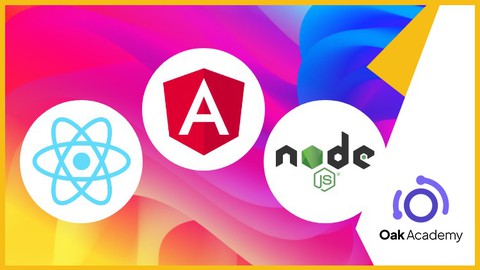
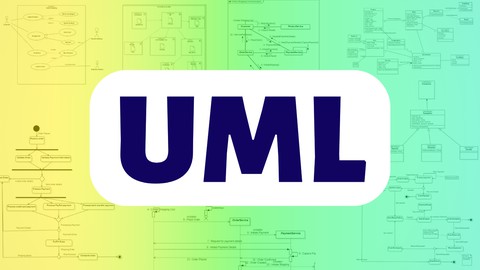
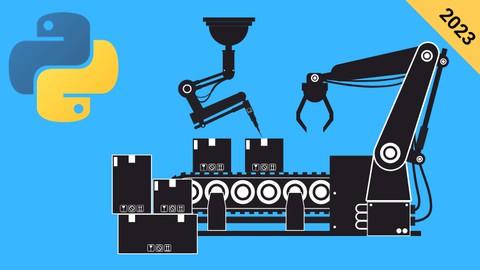
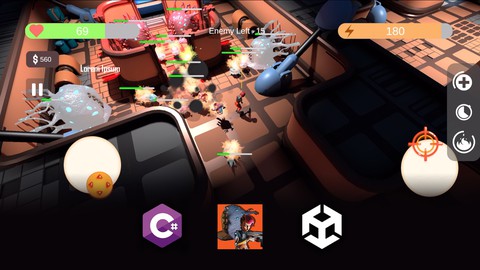

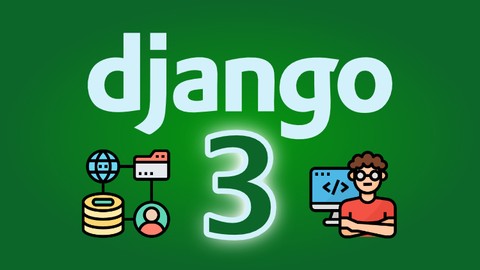
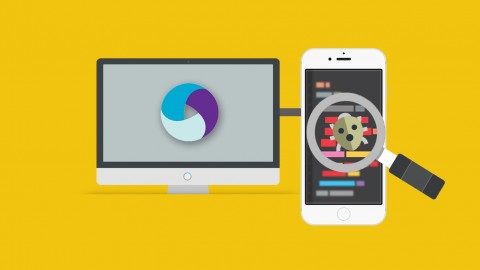



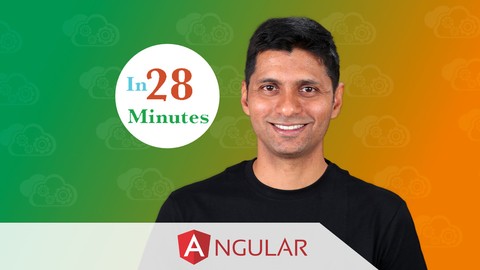
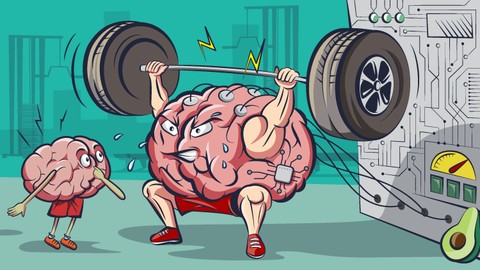
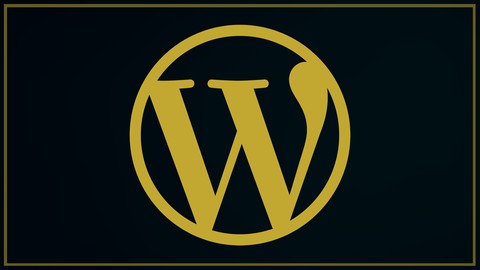
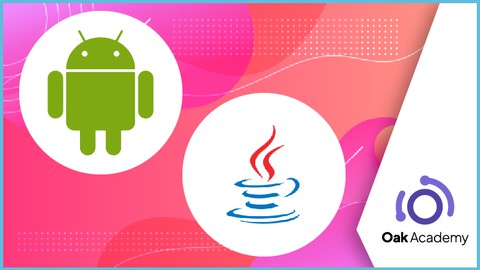



Đánh giá của học viên
Bình luận khách hàng